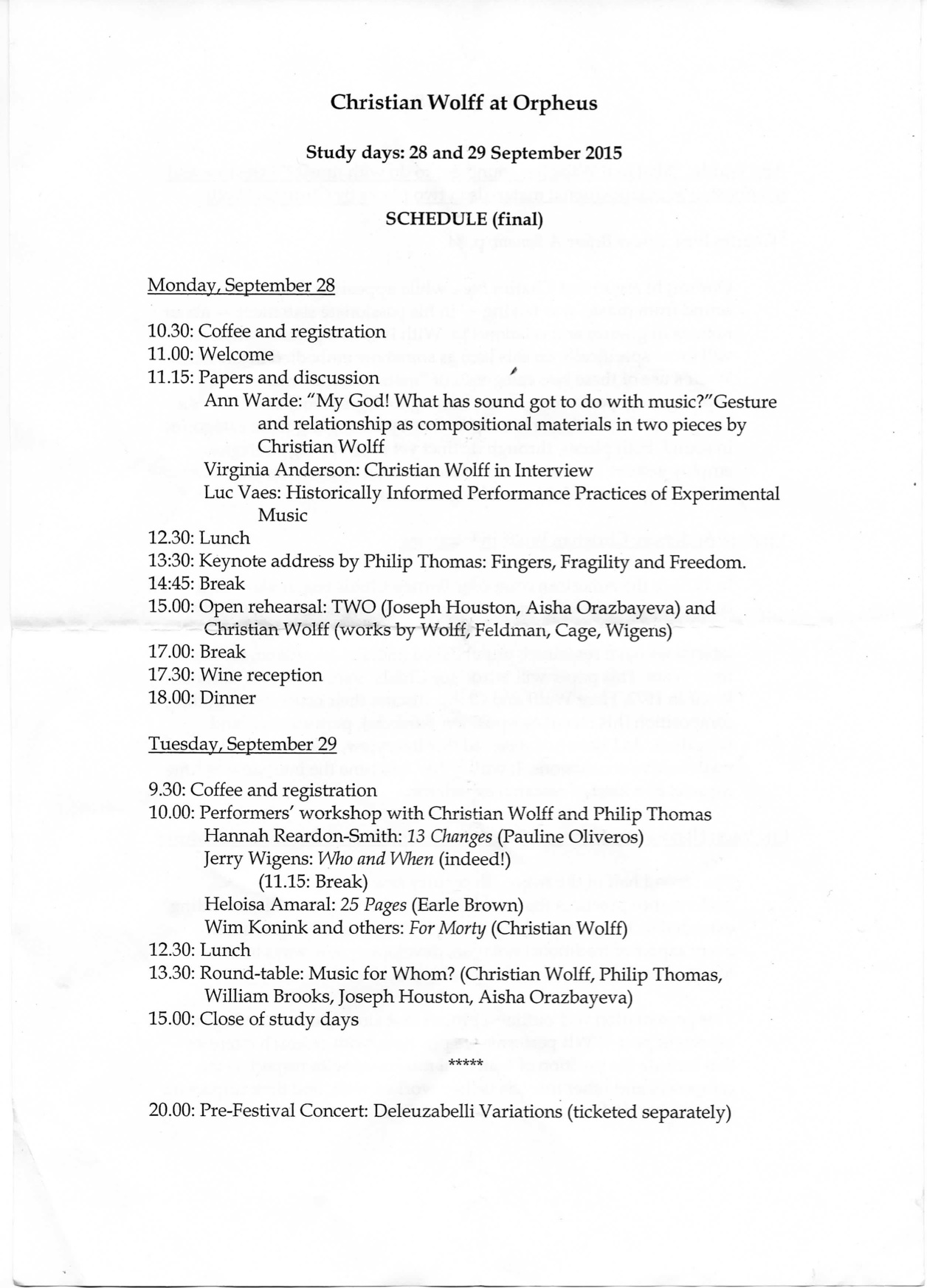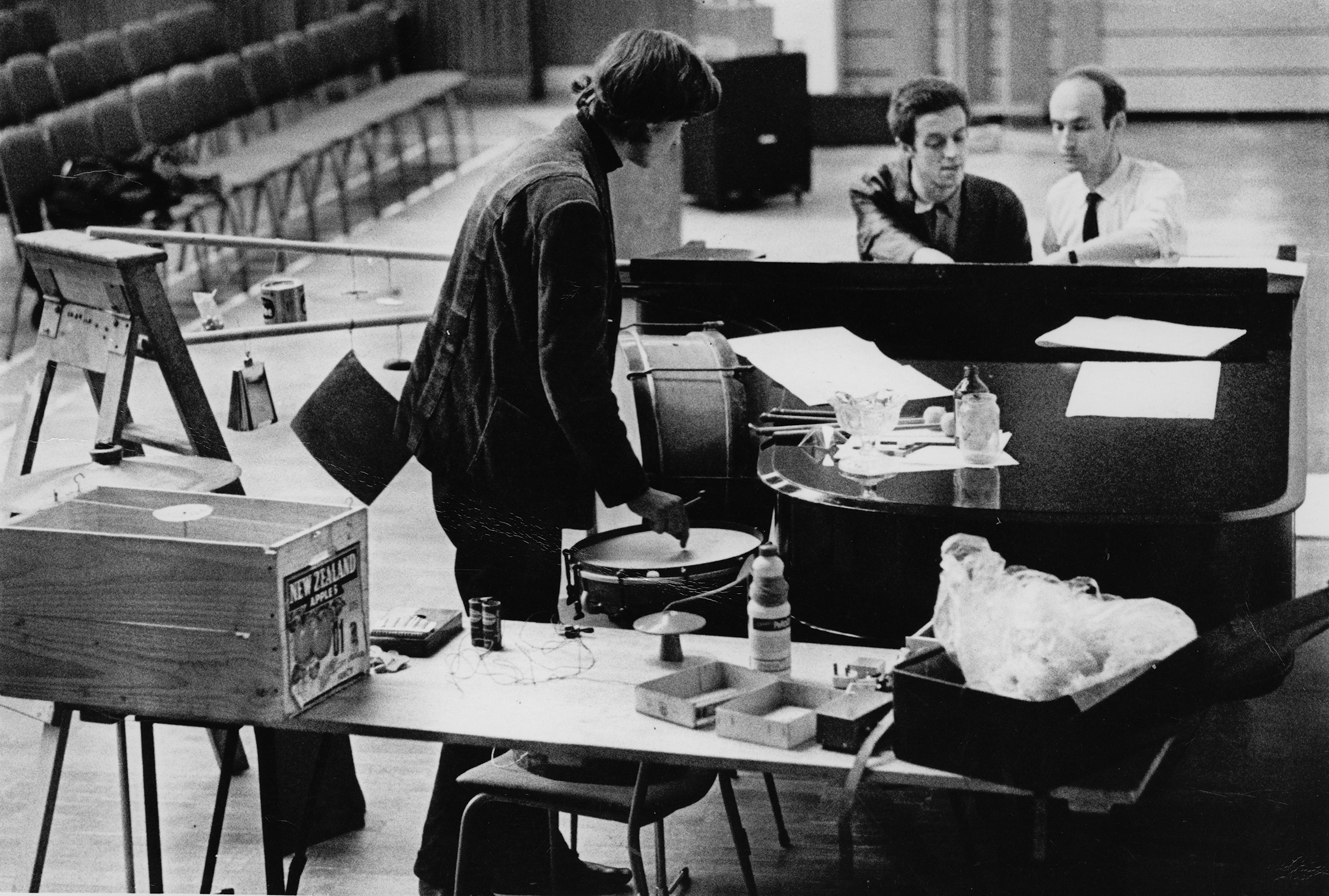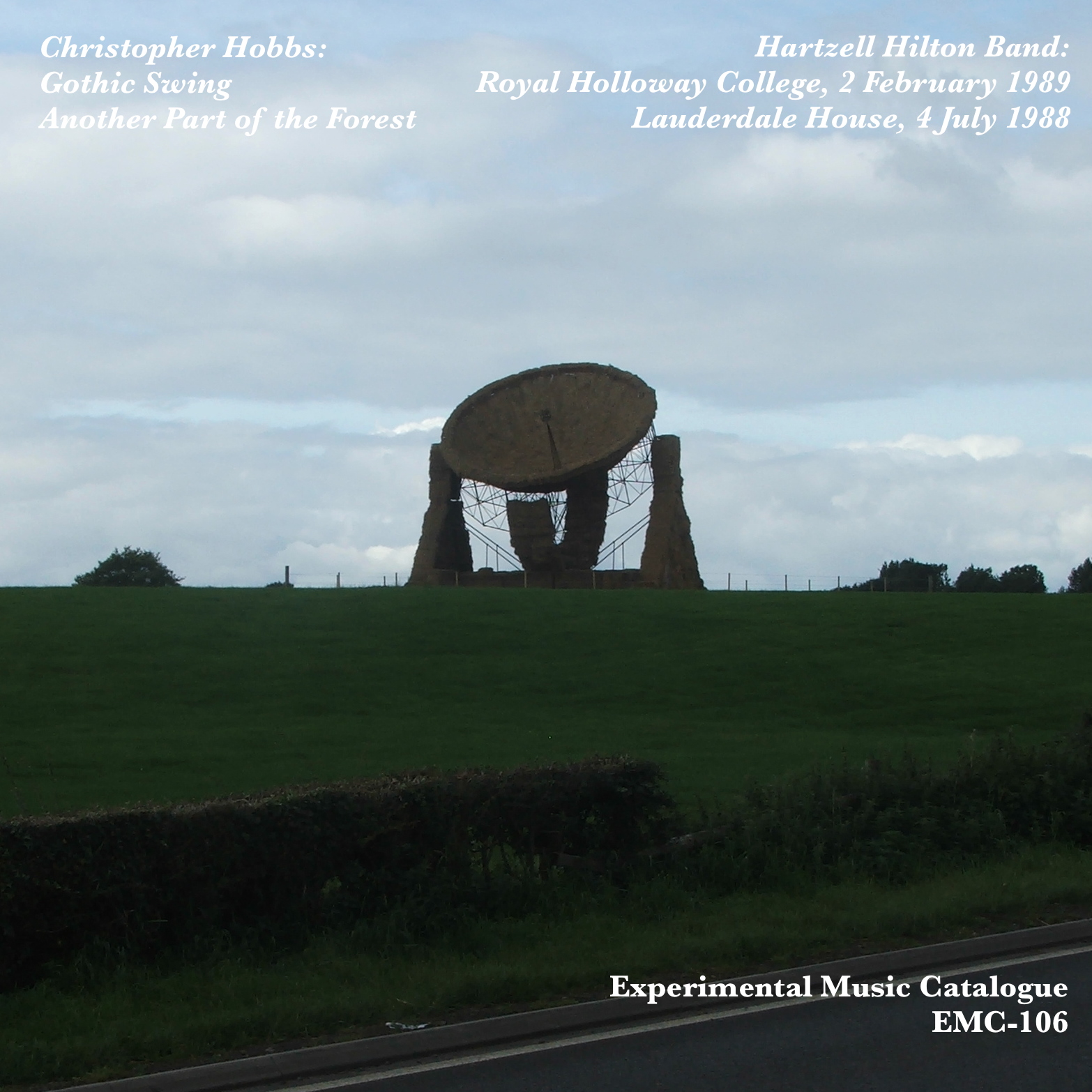There’s been a lot of discussion surrounding David Bowie’s sudden death. Here’s a connection with Cornelius Cardew, albeit in reaction to one gross misstep that Bowie made in his life and career. Robert Worby has published a link to the Musicians’ Union reaction to David Bowie’s 1976 Nazi salute (which he denied), in which Cornelius Cardew helped draft a statement about musicians and fascism. You can find the article here, on the MU History page: http://www.muhistory.com/from-the-archive-2-mu-response-to-david-bowies-nazi-salute/
Category: Media that we like
This is where we look at things that happen in radio, video, on the web and such.
Science and the experimental method
Virginia Anderson’s chapter for the book Experimental Systems: Future Knowledge in Artistic Research (ed. Michael Schwab) is available as a version of record on her Academia.edu page. This chapter details some ways in which British experimental composers have used real scientific methods in their work, often with fictive materials or impossible conclusions. Composers include Cardew and the Scratch Orchestra, Gavin Bryars, and Christopher Hobbs.
You can find it here: https://www.academia.edu/4903150/Whatever_remains_however_improbable_British_experimental_music_and_experimental_systems_
Differently drumming
For some months now I’ve been playing with the South Leicestershire Improvisors Ensemble, a great local British free improvisation group, and the brainchild of the drummer Lee Allatson. Lee Allatson is a true original, as can be said of most ‘frimp’ drummers (for example, AMM’s Eddie Prévost, or Derby-based Walt Shaw). But most other frimp drummers I’ve worked with either separate their activity into ‘experimental’ and more traditional work. In the 1980s, especially, Eddie Prévost used various kinds of percussion, including the AMM barrel drum, for his experimental performances, moving to his kit drum for the Eddie Prévost Quartet. Walt Shaw, a visual artist who also drums, applied visual-arts sensibilities to his work, creating an assemblage of sound sources on and around a table, much like Keith Rowe has made an assemblage of his deconstructed guitar, which created for many, the sight and sound of AMM over the years.
Instead, Lee Allatson works mostly with his leopard-skin drum kit, augmented by a host of almost steam-punk beaters and sound sources. Lee has created a series of video etudes, in which he explores many of these sound sources on his kit. The result is, like the best etudes, a combination of the educational and the artistic. You can see them here: https://vimeo.com/album/3582288/sort:date/format:thumbnail .
Here’s the most recent one, an improvisation moving into a king of “punky” beat.
And if you’re passing the East Midlands next month, come and see the South Leicestershire Improvisors Ensemble, which we lovingly know as S.L.I.E., on 4 February at Quad Studios, Leicester, from 8.30 pm. Those of you on Facebook may wish to follow S.L.I.E’s adventures here: https://www.facebook.com/SouthLeicestershireImprovisorsEnsemble/?fref=ts The current lineup includes Lee on drums; Trevor Lines on bass; Chris Hobbs on keyboards and other stuff (resonating sound sources and perhaps bassoon); Bruce Coates on saxes. I’m listed as playing reeds, but will always be found on the clarinet end of things, and we may have a guest sitting in.
4’33” on the radio
Having heard Max Reinhardt’s deeply unsatisfactory introduction to La Monte Young’s Well-Tuned Piano (to put it kindly) the other day, I approached Robert Worby’s fifteen-minute talk about Cage’s 4’33” in The Essay: Five Seismic Moments in New Music (BBC Radio 3), with hope, as he has background — form — in experimental music. And it was really pretty good. Worby talked about his own first performance (on classical guitar), and discussed the way that performance is (or should be) active, rather than passive, and the shared element of listening between performer and audience.[1] And of course he mentioned the role of the environment in the piece.[2]
Worby mentions some restrictions that I have not found in a reading of the separate editions of 4’33” (David Tudor’s reconstruction of the original Woodstock score, the time-space notated Kremen score (and its slight variant in Source, and the published Peters ‘verbal’ score), especially the Peters edition, to which he refers. Worby stressed the idea that the three movements are required in all performances, and there is no such direction. He also seemed to suggest that one had to make some kind of gesture toward playing (Tudor depressing the pedal before closing the keyboard fall; Worby fingered different chords for each section in his performance). This doesn’t appear in the scores, so it isn’t a requirement that the performer do so.[3] Finally, Worby gave his political interpretation of the piece as resistant against McCarthyism and possibly homophobia. However, this, like his thoughts on the shared listening element in 4’33”, added a very welcome analytical conclusion to his narrative.
This was, given the introductory nature of the essay, a good take on 4’33”. It is certainly better by far than some of the mis/disinformation promulgated by writers in ‘academic’ publications who have never seen the score. Factually, you might get more from Kyle Gann’s book, No Such Thing as Silence: John Cage’s 4’33”. Perhaps Worby got some of his information from this book, or from Larry Solomon’s long-standing web page, 4’33”. But this is more immediate, especially for a student who is new to indeterminacy. Worby makes a great story teller; it’s well worth a listen even if you’re an old hand.
You can get this essay for a limited time (I’m not sure how long) on the BBC Listen Again pages: http://www.bbc.co.uk/programmes/b06tks32
[1] At the Royal Musical Association graduate student conference at Goldsmiths College in 1989, one presenter proved his thesis that 4’33” was not a composition by sitting down at a piano, starting a stopwatch, and fidgeting for the three durations given in the Peters edition. I asked, have you ever seen a proper performance of this piece? He said he had just performed it and I replied no, you certainly did not perform it, at least not correctly. The discussion entered into social and ethnomusicological connotations of silence, which was fascinating. The presenter, a young master’s student who had obviously been given poor instruction by his advisers, was mostly silent.
[2] My personal favourite performance was at the end of the Classic Masterworks of Experimental Music Festival at the University of Redlands, 1982, which I curated. The night being warm, the stage doors were open. Given that the other pieces on the concert — Terry Riley’s In C and Frederic Rzewski’s Les moutons de Panurge — were very loud, no one noticed the sounds of the outdoors until 4’33”, when the room filled with the sounds of Saturday night on campus; the stereo sounds and happy party shouts of the boys’ dorm immediately behind the hall, and, further, the shouts and cheers of a school football game. I called this sound event an Ivesian moment in my article on time and listening in experimental music, ‘(Re)Marking Time in the Audition of Experimental Music’, in Performance Research, which is available on my Academia.edu page.
[2] I simply put the cap on my clarinet mouthpiece; when we did it in a wind band performance, we suggested putting the instruments at ‘attention’ on the players’ laps, but this was a performance decision not a score response. I discuss the distinction between the exact content of indeterminate scores and performance decisions in ‘The Beginning of Happiness: Approaching Scores in Graphic and Text Notation’, in the book Sound and Score, also available on Academia.edu.
Minimalism and Postminimalism gratis
Kyle Gann’s Postclassic blog (Arts Journal) is one site I like to turn to regularly. This time, Kyle has posted his chapter from The Ashgate Research Companion to Minimalist and Postminimalist Music. Called ‘A Technically Definable Stream of Postminimalism, Its Characteristics and its Meaning,” this forms the second of the four regional overviews of various styles of minimalism in the book, grid-pulse postminimalism. It’s well worth a read, as it corrects some misconceptions about postminimalism in some area, and expands our knowledge greatly about others. And it’s free. Free. I write again, free. The only reason this chapter, and this book, have not picked up as much of a readership is not because it’s dense or boring, but because the book was priced out of reach of all but the most well-endowed libraries.
So, enjoy! http://www.artsjournal.com/postclassic/2016/01/technically-definable-therefore-existent.html
And, while you’re at it, may I ever-so-humbly suggest the fourth chapter, ‘Systems and other Minimalism in Britain, that I wrote. There are sweet things in both of these chapters, and both are absolutely free. https://www.academia.edu/4991379/Systems_and_Other_Minimalism_in_Britain
Pritchett on Cage and Feldman, addendum
Further to our last post, on James Pritchett’s series of posts on his blog, The piano in my life, about the Cage-Feldman Radio Happenings chats…. Pritchett has just posted the final instalment, dealing with how he received the tapes of these conversations, how the gap appeared, and what happened afterward. We won’t say any more: Pritchett’s narrative is such good historiography — just a really fine story, actually — that we’ll leave it for you to read, here: http://rosewhitemusic.com/…/how-i-happened-upon-the-happen…/
Pritchett on Cage and Feldman
The other week our friend Oded got in touch, asking if we knew about a new topic on The piano in my life on the four long conversations between John Cage and Morton Feldman in 1966–7, known as the Radio Happenings. The piano in my life is a blog written by James Pritchett, and Pritchett wrote one of the best books on Cage (it’s a classic: if you haven’t read it, try the Google Books taster: here). So it’s no surprise that The piano in my life is one of our favourite blogs here at the Experimental Music Catalogue.
The post to which Oded referred turned out to be the first in a series of posts about this conversation, starting with an article in The Guardian newspaper about the conversation. Pritchett took it up from here, about a gap in the tape at a crucial point when Cage mentioned Varèse.
JC: Everyone I mentioned that thought to is also struck, because those other ways of explaining Varèse [tape is damaged at this point; sound out for 15 seconds]. Do you suppose he didn’t know what he was doing? or knew what he was doing and didn’t want anyone to know?
This 15-second gap exists in the conversation as archived on RadioOM and Youtube.
However, Pritchett had a copy of the tape that included the missing comment, and this string of The piano in my life posts reveals the background about the Radio Happenings and what was in their conversations.
When Oded notified me of the first post, I decided to wait a while, so I could provide a link to the whole story. But now that it is almost complete, it’s much too good not to share. Pritchett has yet to finish his post, which will describe how he received the full, undamaged tape in a New York Indian restaurant. I’ll update you when he does so.
News from Ghent….
Here are some pictures and impressions from the Christian Wolff at Orpheus Study Days, 28 and 29 September at the Orpheus Research Centre, in Ghent, Belgium, as promised (before our host upgrade slowed things down…). The show started off a bit late — Eurostar from London was delayed because thieves had stolen track cables in France — but it was jolly and productive, in the way that Orpheus study days are. Our host for the proceedings was the composer and historian William Brooks, and the guest for the proceedings was Christian Wolff, himself. Although there were papers and discussion, there was a lot of time given to the performance of Wolff’s music by several very talented young professionals and students. This reflects the Orpheus goal of Artistic Research, using performance as part of the research whenever possible.


The first session contained the formal papers. Ann Warde, a Fulbright recipient from the US, resident in York University, took structural elements, especially durations, to examine the similarities in sound organisation between two very different Wolff pieces (Dark as a Dungeon and Edges). My paper, as can be seen in the abstract, dealt with a 1972 interview with Wolff by the composer Barney Childs, focusing on Wolff’s then most recent project, his large-scale experimental work Burdocks. Luc Vaes’ paper was not on Wolff, per se, but was a welcome look into performance practice of indeterminate music, focusing on the music of Mauricio Kagel.
After lunch, and the keynote address by Philip Thomas, TWO (the pianist Joseph Houston and the violinist Aisha Orazbayeva) put themselves up for scrutiny from the assembled delegates and the composer, in their performance of his work. Orazbayeva was particularly interesting as a performer, having ‘given up’ vibrato some time ago. Her tone is thus ethereal, almost folklike.

The afternoon was followed by a lovely wine reception and dinner at a local establishment.

The morning session contained more performances, including a rather stunning performance by the flautist Hannah Reardon-Smith of 13 Changes by Pauline Oliveros, and an exercise in directed improvisation by Jerry Wigens.

The afternoon saw a kind of wrap-up of ideas regarding performance and the social factor in Wolff’s music.

I have purposefully omitted to apply any critical judgement on the event because I think it should stand alone here. Almost all of the two-day event was eminently useful and highly enjoyable. Meeting Christian Wolff again was a personal highlight for me and, in many ways, personally moving. The event elided into a larger Orpheus festival which by all accounts was lovely (I was unable, sadly, to attend). But these two days provided a small-group setting in which we all had the leisure to interact with the performers, the scholars, and with Wolff himself.
Historic photo
Having had some delay due to a web server upgrade, we were unable, until now, to post a photo here that I received, thanks to Christian Wolff. Some of you may have seen this on the EMC Facebook page (https://www.facebook.com/emcsystems/, which is a good source for immediate things of interest), but I wished to place the picture here, where it will have a more permanent place to live.
Here is (l-r) Christopher Hobbs, Cornelius Cardew, and Christian Wolff rehearsing Trio II for Sounds of Discovery, at the International Students House, London, 22 May 1968. This four-day concert series occurred when Christian Wolff was resident in London, about the time he was working on his Prose Pieces and, coincidentally, Cardew was creating the first Paragraph of his massive work, The Great Learning. This concert was just under a year before the Music Now Festival at the Roundhouse, London, which would see the premiere of Paragraph 2, as well as provide the basis for the Scratch Orchestra.
Some of the materials in the foreground are there for another piece. The four-day event also included the British premiere of Terry Riley’s In C, directed by Hobbs. Hobbs was, at the time, just 17, and a student of Cardew’s at the Royal Academy of Music, but Cardew brought Hobbs into the scene as an equal participant.
I was absolutely thrilled to find that Christian Wolff had this photo, and for the Dartmouth University Library to provide a copy (it is part of a current exhibition on Wolff). In these days of digital snapshots, it is easy to forget how infrequently we documented our lives on film, due to the expense (especially indoor shots, which then required flashbulbs or fancy film stock). I will add more to the context of this photo in due course, but I thought it worth showing.

New Bandcamp ‘EP’
The EMC has just released their new ‘single’ download, Hobbs with the Hartzell Hilton, a set of two archival recordings by the Hartzell Hilton Band, both of pieces by Christopher Hobbs: Gothic Swing, and Another Part of the Forest.
They are available on our Bandcamp site:
http://bandcamp.experimentalmusic.co.uk/music
Here are the notes:
Gothic Swing and Another Part of the Forest were written for the Hartzell Hilton Ensemble, an idiosyncratic group which played together in the late 1980s. Its members were Jane Aldred and Virginia Anderson (Eb clarinets), Karen Demmel and Michael Newman (violas), Simon Allen (vibes) and Christopher Hobbs (piano).
Gothic Swing, recorded here in the reverberant acoustic of Royal Holloway College, Egham on February 2 1989, is an exuberant, outward-looking piece. Another Part of the Forest (recorded at Lauderdale House, London on July 4 1988) is more introspective, and while the piano plays quite an ubiquitous role in the first piece, here it is silent for almost half of the work, with the vibes providing a gentle ostinato in the long slow middle section.
Also available: our free version of Christopher Hobbs’ Sudoku 104 (EMC-105), also on Bandcamp.

